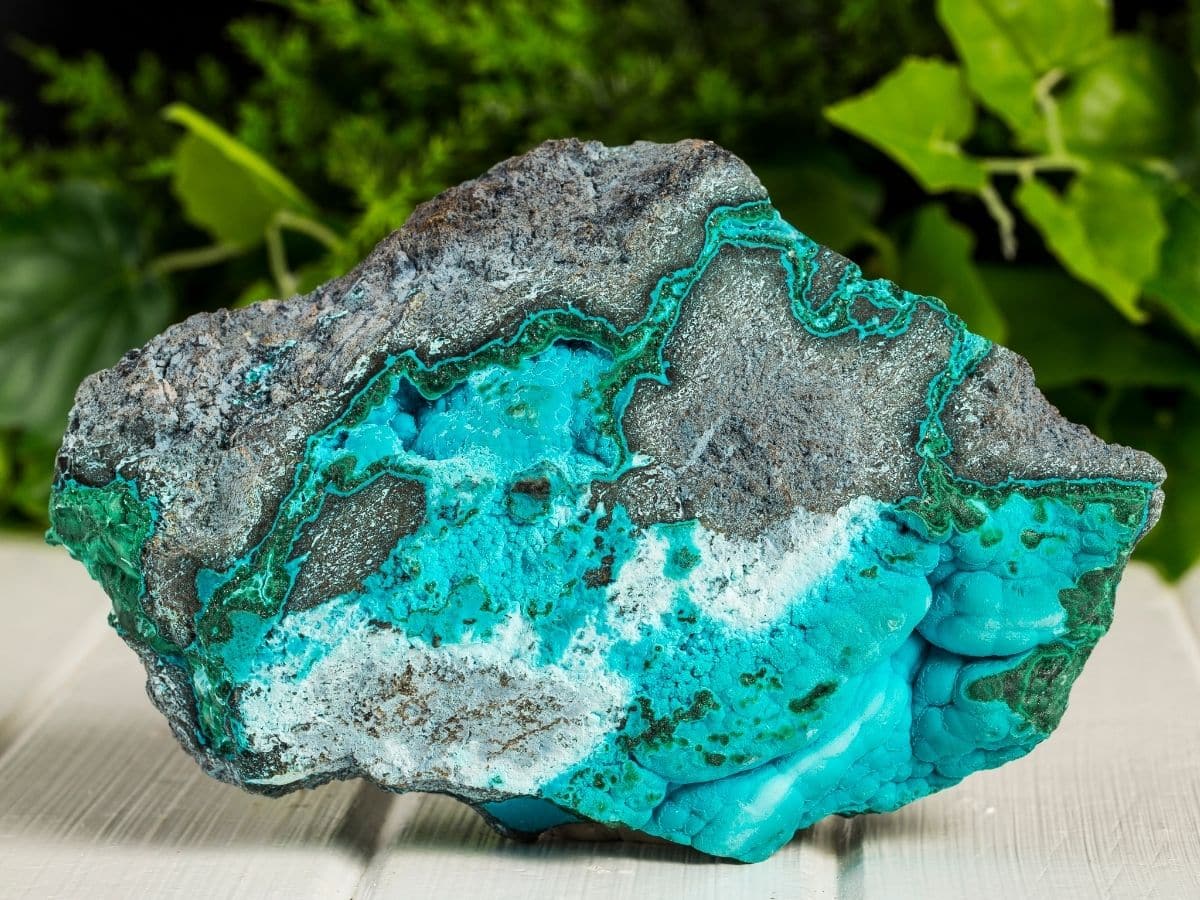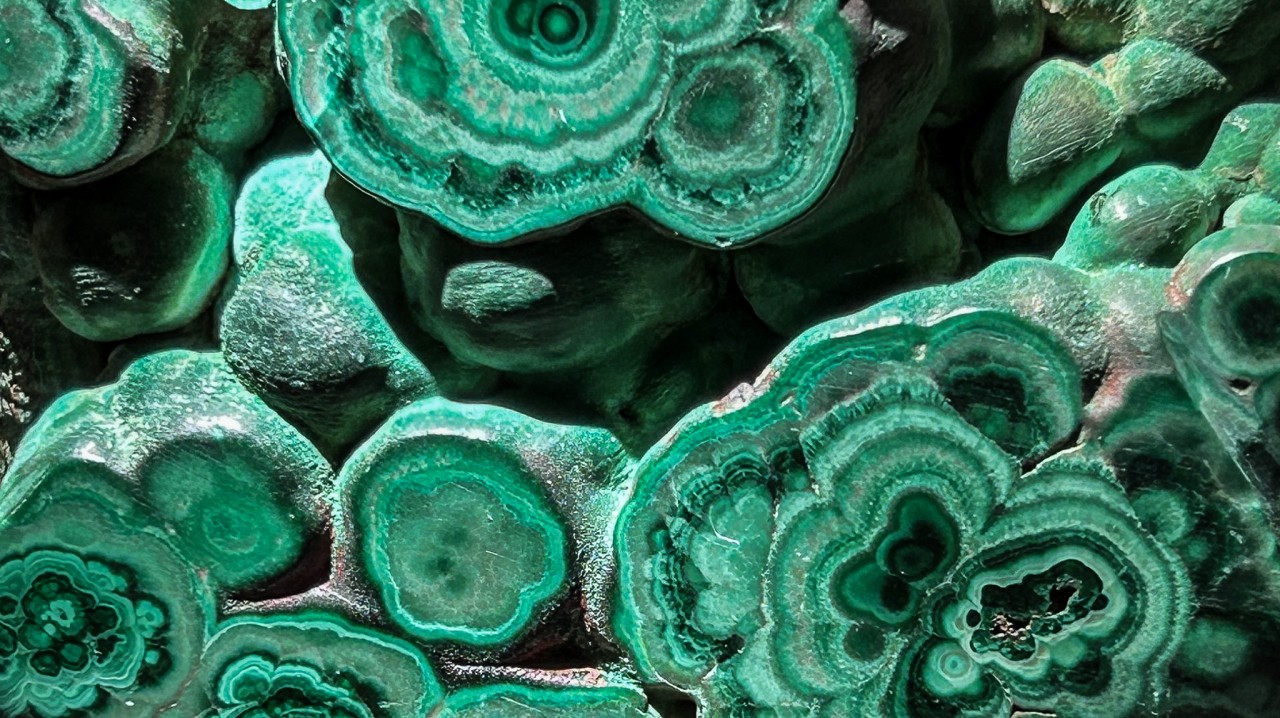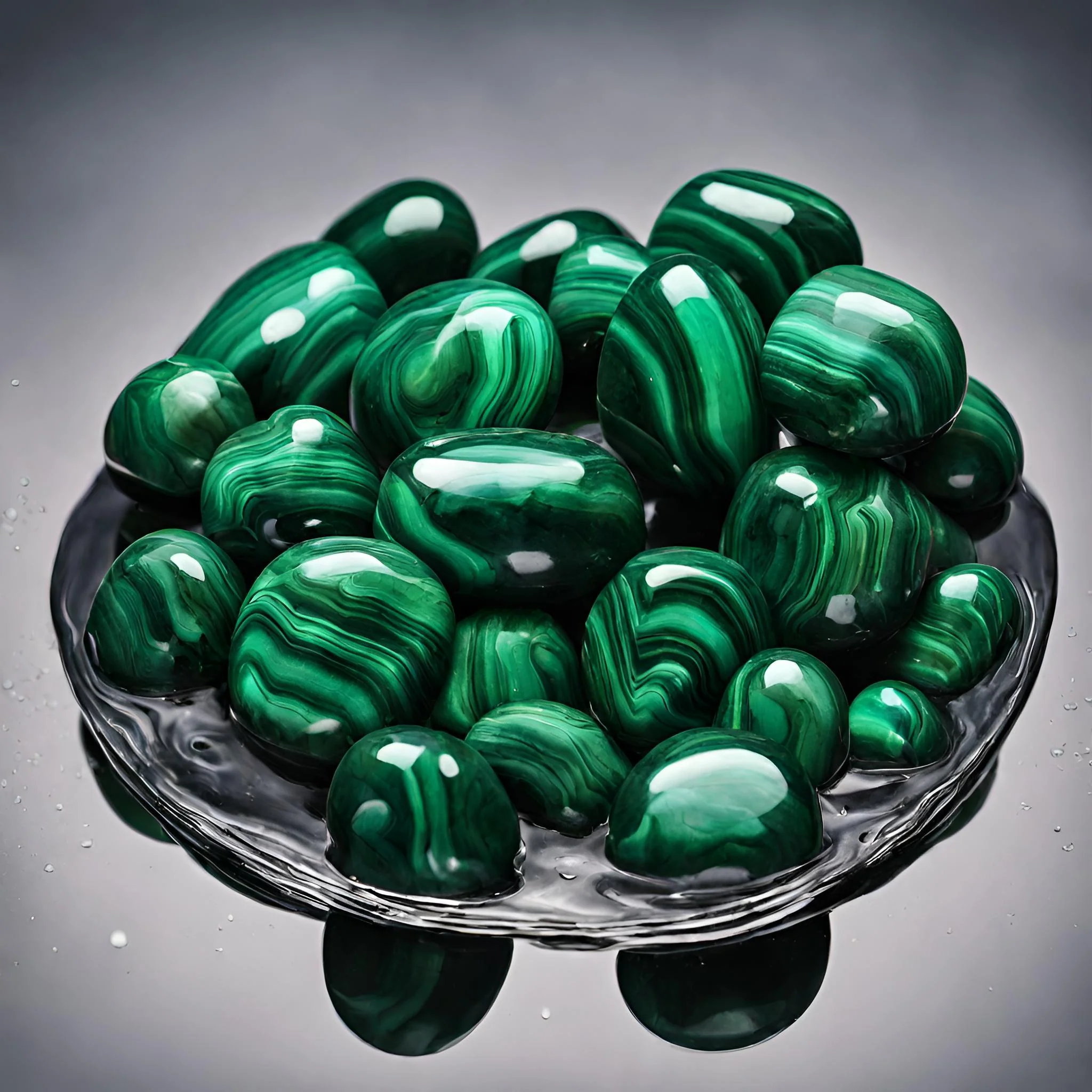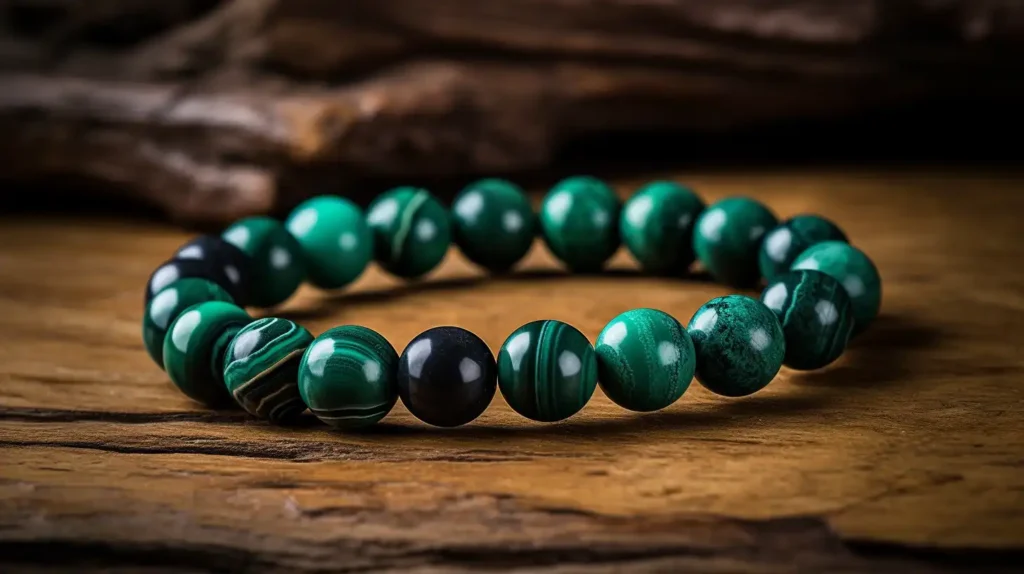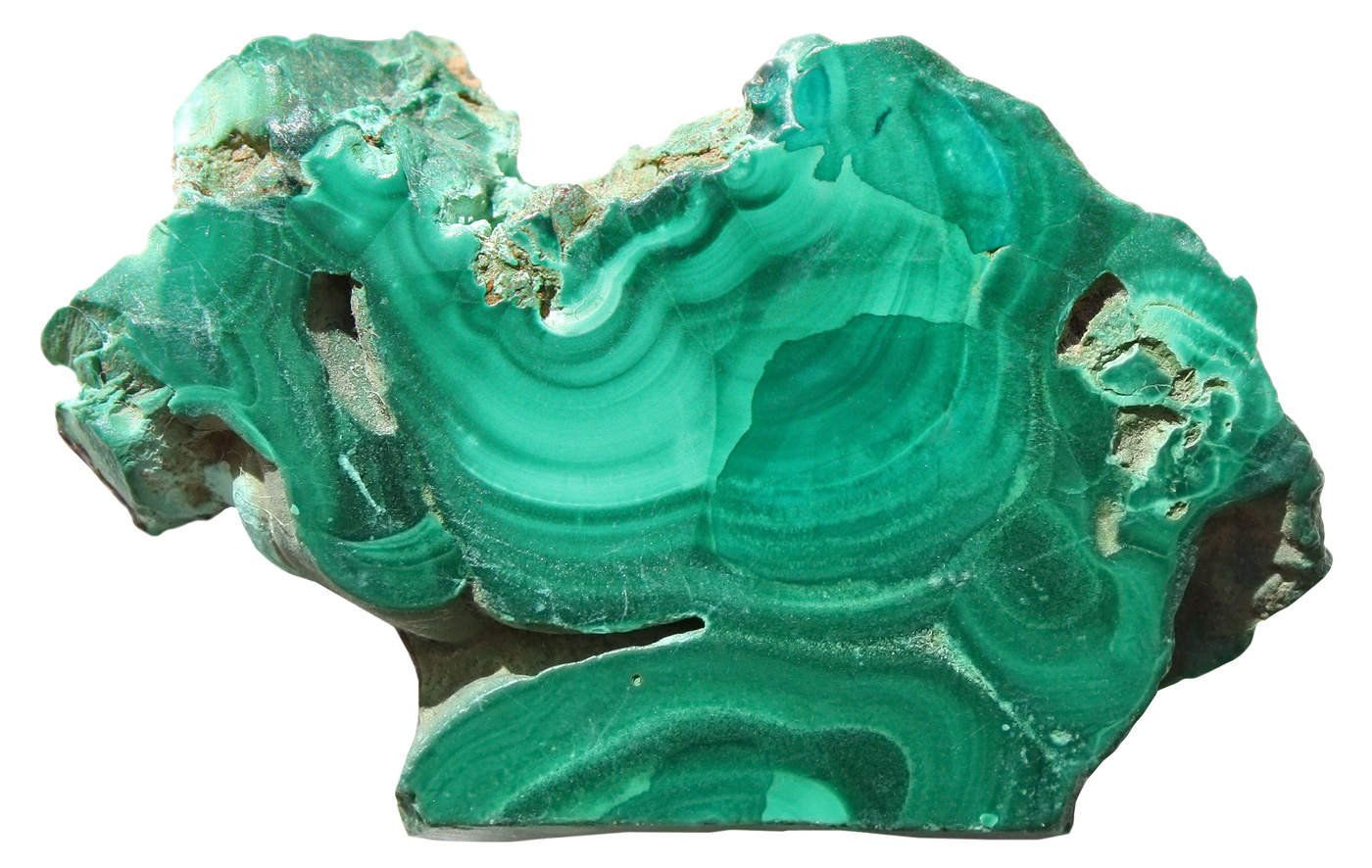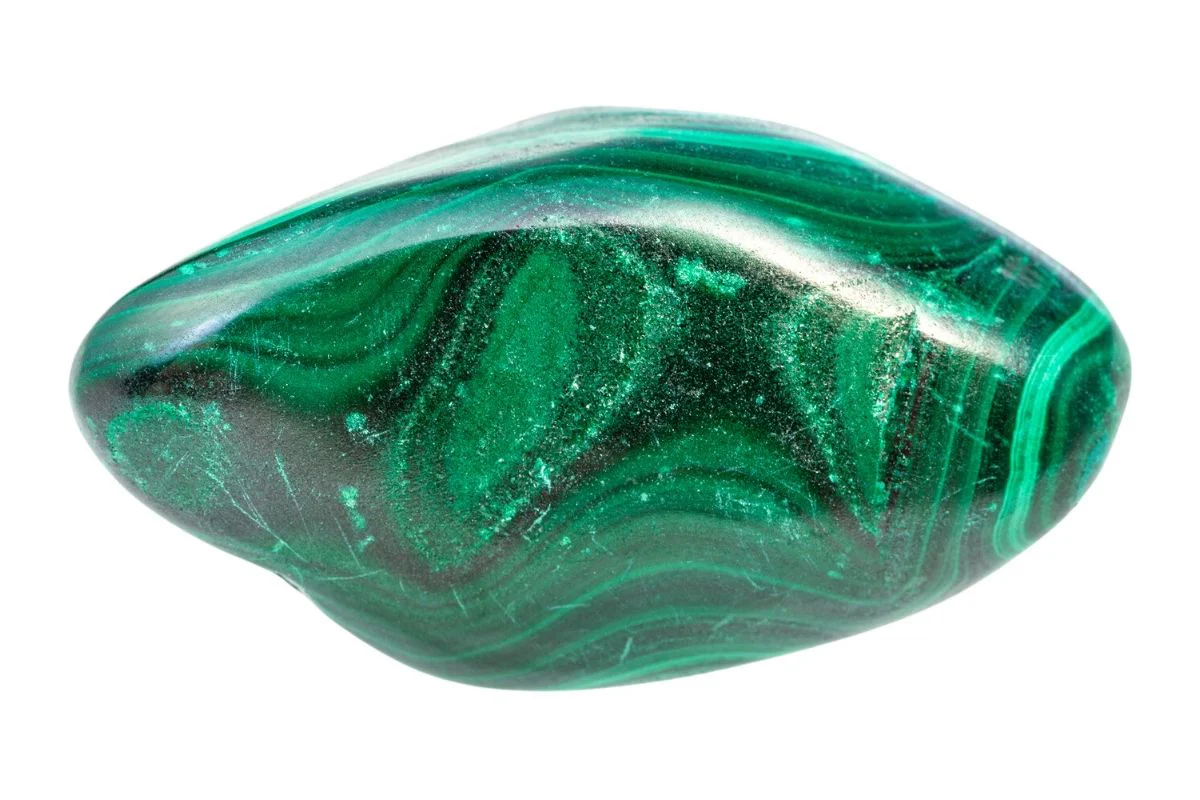
Malachite gemstones, with their lush green hues and distinctive swirling patterns, have captured human imagination for thousands of years. This extraordinary gemstone is not only valued for its aesthetic appeal but also revered for its historical significance, healing powers, and versatile applications. From ancient cultures to modern uses, malachite continues to enrich lives with its beauty and transformative energy.
What Is Malachite?
Malachite is a copper carbonate hydroxide mineral celebrated for its vivid green coloration and distinctive banded patterns. Formed through the weathering of copper deposits, malachite is often found in botryoidal, stalactitic, or massive formations. Its range of green hues, from light pastel tones to deep emerald, creates an unmistakable allure.
Chemical Composition And Formation
Malachite’s chemical formula is Cu2(CO3)(OH)2. This mineral forms when water containing carbon dioxide interacts with copper deposits, typically in limestone environments. Malachite often coexists with azurite, calcite, and iron oxides, resulting in stunning natural formations.
A unique feature of malachite is its reaction to diluted hydrochloric acid, where it effervesces due to its carbonate content a property used for identification by experts.
Origins Of Malachite
The finest malachite specimens are predominantly sourced from the Democratic Republic of Congo, Russia’s Ural Mountains, and the United States (Arizona). Other notable deposits include South Africa, Australia, Chile, and Romania.
See Also: Top 10 Unique Gemstone Engagement Rings You’ll Love
Historically, malachite from Egypt and Israel was prized for its use in pigments, jewelry, and protective amulets. Today, the Congo supplies the majority of malachite for the global market, often in massive and high-quality formations.
History And Cultural Significance
Malachite has played a significant role in human history, admired across cultures for its protective, decorative, and symbolic properties.
- Ancient Egypt: Malachite was associated with Hathor, the goddess of joy and fertility. It was used in amulets, cosmetics, and burial rituals.
- Ancient Greece and Rome: The stone was believed to ward off evil and bring prosperity. It was commonly carved into jewelry and ornaments.
- Middle Ages: Europeans considered malachite a talisman for children, offering protection from harm and misfortune.
- Russian Royalty: During the 19th century, massive malachite slabs adorned the Malachite Room in St. Petersburg’s Winter Palace, showcasing the stone’s decorative potential.
- Victorian Era: Malachite became popular in jewelry, with its rich green hues complementing intricate designs.
Malachite’s Properties
Physical Properties
- Color: Ranges from light green to dark green, often with concentric banding patterns.
- Hardness: 3.5 to 4 on the Mohs scale, making it relatively soft and easy to carve.
- Composition: A copper carbonate hydroxide mineral.
Due to its softness, malachite is prone to scratches and damage from heat or acids. Many specimens are treated with resin or wax to enhance durability and luster.
Metaphysical Properties
Malachite is known as the “Stone of Transformation” for its ability to promote personal growth and emotional healing. Key metaphysical properties include:
Read Also: Top 20 Most Expensive Gemstones In The World
- Emotional Healing: Helps release negative emotions and past traumas.
- Protection: Shields against negative energy and environmental pollutants.
- Chakra Alignment: Activates the Heart and Solar Plexus chakras, fostering balance and harmony.
- Spiritual Growth: Enhances intuition and deepens meditative practices.
Benefits Of Malachite Gemstones
Physical Benefits
- Female Health: Known as the “Midwife Stone,” malachite alleviates menstrual pain, cramping, and labor discomfort.
- Immune Support: Stimulates the liver to detoxify the body and boosts immunity.
- Pain Relief: Assists in managing arthritis, asthma, and joint pain.
- Blood Pressure Regulation: Helps lower blood pressure and improve circulation.
Emotional Benefits
- Emotional Release: Encourages self-expression and helps overcome shyness.
- Relationship Support: Promotes compassion, understanding, and healthy relationships.
- StressRelief: Combats depression and reduces feelings of anxiety.
Spiritual Benefits
- Energy Clearing: Removes energy blockages and supports chakra alignment.
- Protection: Acts as a shield against psychic attacks and negative influences.
- Intent Amplification: Enhances the power of intentions during meditation and energy work.
How To Use Malachite
In Jewelry
Malachite’s striking appearance makes it a popular choice for:
It pairs beautifully with metals like gold, silver, and copper. Due to its softness, protective settings are recommended to prevent damage.
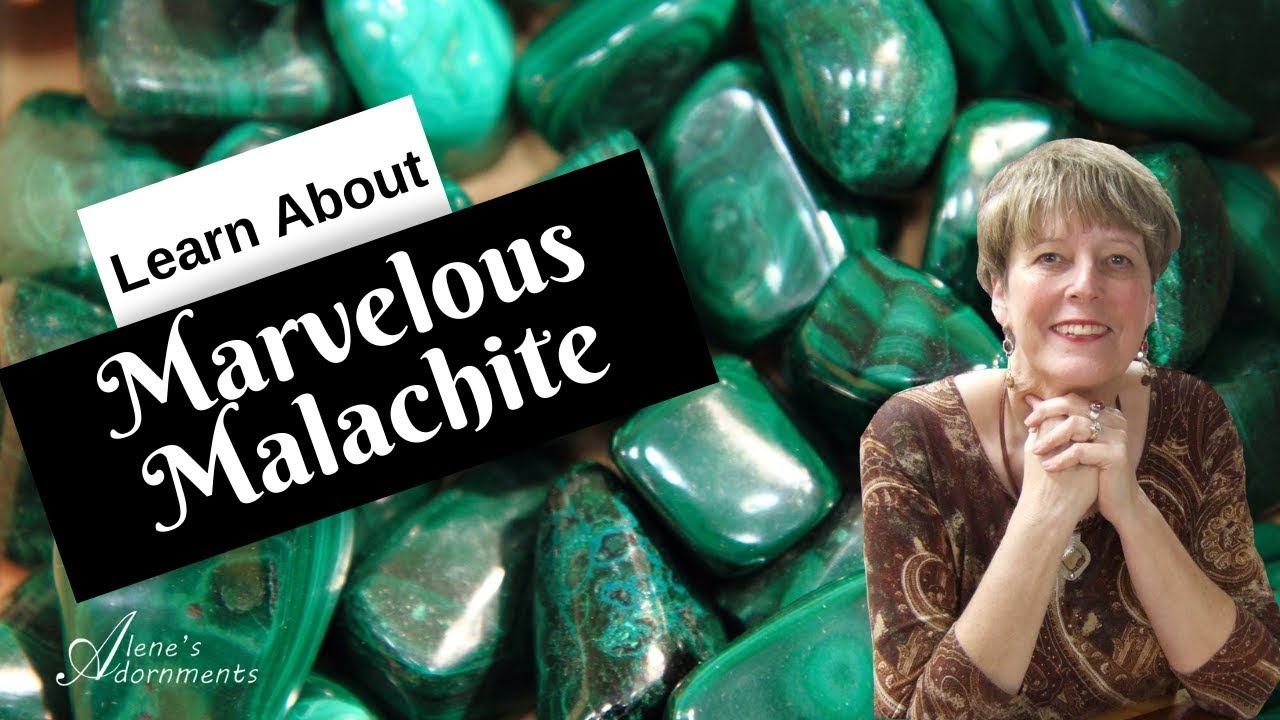
Learn about Malachite gemstones
In Home Decor
Malachite adds sophistication to interiors through:
- Decorative items like vases, bowls, and bookends.
- Feng Shui applications: Place malachite in the southeast area of your home to attract prosperity and health.
In Healing Practices
- Meditation: Place malachite over the heart or solar plexus chakra to enhance emotional and spiritual healing.
- Crystal Grids: Incorporate malachite into crystal arrangements to amplify intentions.
Care Instructions
- Cleaning: Use a soft, damp cloth and avoid chemicals or ultrasonic cleaners.
- Storage: Keep malachite away from harder gemstonesto prevent scratches.
- Protection: Avoid prolonged exposure to sunlight or heat.
How To Identify Genuine Malachite
Real malachite can be identified by:
- Banding Patterns: Unique, irregular concentric rings in varying shades of green.
- Weight: Genuine malachite feels dense and heavy compared to synthetic versions.
- Texture: Polished malachite has a smooth, silky feel.
Imitations may exhibit overly consistent patterns or feel lighter and plasticky. To ensure authenticity, buy from reputable dealers and request certifications.
FAQs About Malachite Gemstones
What Is Malachite Used For?
Malachite is used in jewelry, home decor, and spiritual practices. Its vibrant appearance and metaphysical properties make it a versatile choice.
How Can I Tell If Malachite Is Real?
Check for irregular banding patterns, heavier weight, and a silky texture. Avoid imitations with uniform patterns.
Is Malachite Toxic To Touch?
Finished malachite is safe, but its dust can be harmful if inhaled. Wash your hands after handling raw malachite.
How Should I Clean Malachite?
Use soapy water and a soft cloth. Avoid prolonged soaking and harsh chemicals.
Why Is Malachite Expensive?
Its rarity, intricate patterns, and labor-intensive mining and polishing processes contribute to its value.
Conclusion
Malachite gemstones combine timeless beauty with profound historical and metaphysical significance. Whether you wear it as jewelry, display it in your home, or use it in spiritual practices, malachite offers a unique blend of elegance and transformative energy. With proper care, this stunning stone can continue to inspire and enrich your life for years to come.
You Might Like: 15 Stunning Teal Colored Gemstones You Need To Know About
